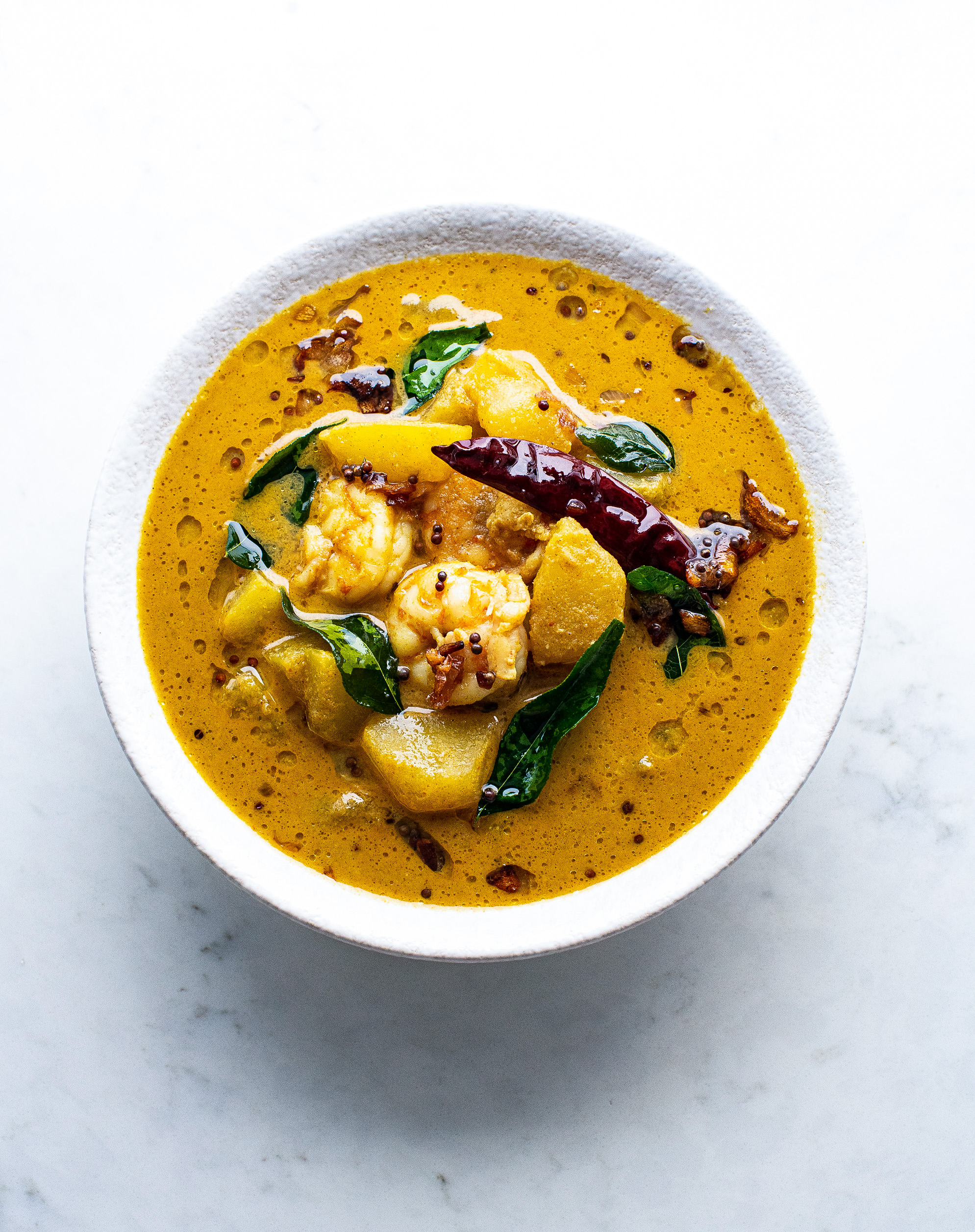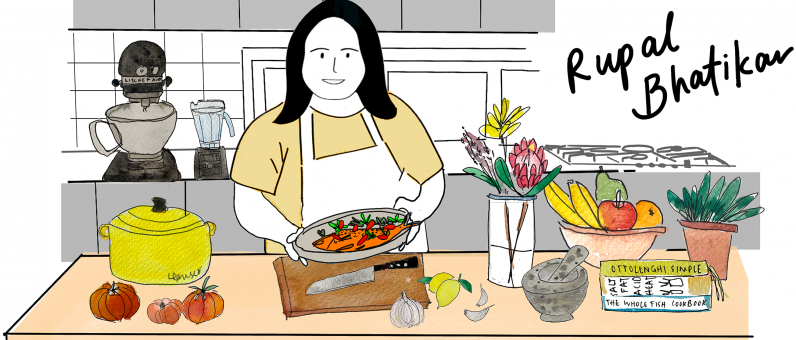This incredibly delicious Kerala Prawn and Green Papaya Theeyal from the coastal South of India is earthy and deeply flavourful. The roasted coconut and spices pair perfectly with the delicate sweetness of prawns. The tamarind brings a sharp sourness that balances every mouthful!

Curries of the South
When you move further south/west, you will find more regional curries that don’t follow the onion-tomato-ginger-garlic base that is typically considered an “Indian” curry. In this Kerala Prawn and Green Papaya Theeyal, the fresh grated coconut is roasted/browned with spices and ground to form the base.
I find it best to roast the spices and coconut separately to ensure each one cooks in its own time. You want the whole spices to become fragrant and not burnt. To get a good even golden colour on the toasted coconut, make sure you are constantly stirring and never step away from the pan. There’s a fine line between roasted coconut and bitter/burnt coconut. It Is important to find that sweet spot for best results.
The tempering with finely chopped shallot, whole red chillies, curry leaves and mustard seeds adds a final flourish. The coconut oil and curry leaf impart a distinct aroma and flavour to the dish and makes it uniquely South Indian. This Kerala Prawn and Green Papaya Theeyal is robust in flavour yet the spices never distract from the prawns. Raw papaya is inherently crisp, white, fleshy and tasteless ( almost cucumber-like) so it is the perfect vegetable to use in a full-flavoured and well-spiced curry like this. What a beautiful pairing fresh prawns and raw green papaya make! We ate this with simple steamed basmati rice and a side of greens. You won’t need much else.
Kerala Prawn and Green Papaya Theeyal
Ingredients
- 1 cup Prawns (peeled and deveined)
- 1/2 cup Green Papaya (cubed into inch sized pieces)
- 1 pinch Turmeric powder
- 1 pinch Red Chilli powder
- Salt (to taste)
- Water (to boil papaya)
For Spice Paste
- 1/2 cup Fresh grated coconut (or dessicated)
- 1 tbsp Coriander seeds
- 3/4 tbsp Fennel seeds
- 6-8 Black Peppercorn
- 1/4 tsp Tamarind paste
- 2 tbsp Canola/Vegetable Oil
- Water to grind
For Tempering
- 2 tbsp Coconut Oil
- 1 tsp Mustard seeds
- 2 tbsp Shallot (finely chopped)
- 10-12 Curry leaves
- 2 Whole dry red chilli
Instructions
- In a fry pan, add the whole spices (coriander, fennel seeds and peppercorns. On a low flame, dry roast the spices. When you do this, its important to constantly move the spices so they toast evenly. Focus on getting them fragrant instead of trying to get colour on them. Set aside.
- In the same pan, add the oil and the grated/dessicated coconut and roast it until it is evenly golden brown. Do this on a medium flame and don't step away at any point. You really want to avoid getting a dark/burnt flavour as that makes it bitter. Getting an even golden colour on most of the coconut is perfect. Cool slightly.
- Transfer the roasted coconut, toasted spices, tamarind paste and water to a blender and blend into a smooth sauce/paste. Add water in stages so you get a smooth consistency. Set aside.
- In a pot, add the green papaya, salt, pinch of turmeric and chilli powders. Use just enough water to cover and bring to a boil. When it comes to a boil, keep it on a gentle simmer and cook until the papaya is tender, not mushy.
- Add the ground coconut-spice paste to the papaya and bring it up to a gentle boil on a medium flame. Add the prawns and let them gently poach in the curry sauce. Taste and adjust the seasoning as necessary. Turn off the heat.
- For the tempering, heat the coconut oil. Add the mustard seeds and let them pop. Throw in the shallots and fry until they are golden. Towards the end, add the curry leaves and the whole red chilli so they don't burn and retain their bright colours. Add the tempering to the prawn and papaya curry and mix through.
- Serve hot with steamed rice and a side of greens.
For other delicious recipes from the blog, click here. If you make this recipe and love it, let me know in the comments below. If you are sharing on Instagram, please do tag me @rupalbhatikar.


Leave a Reply